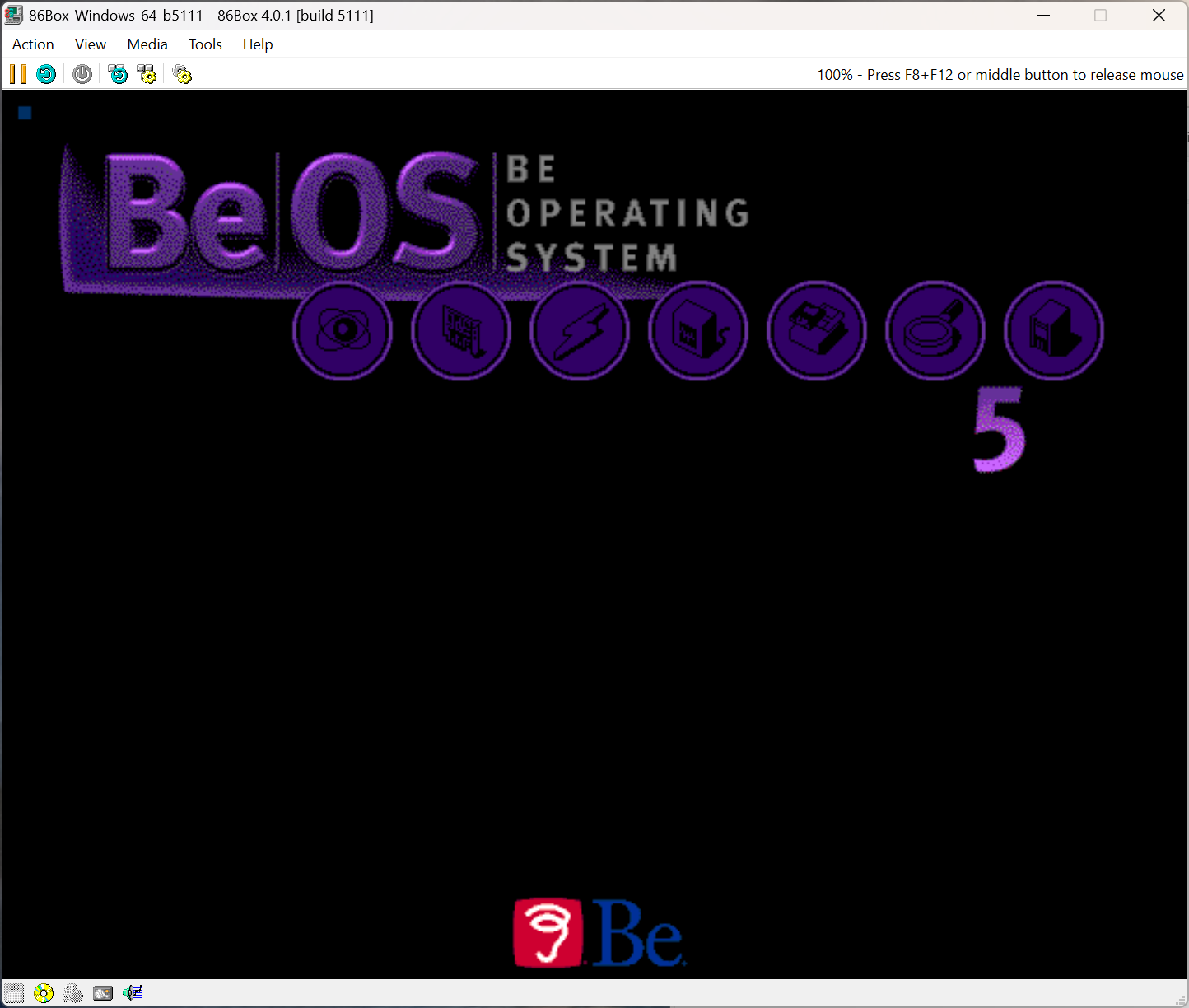The other operating system: BeOS 5 Personal Edition

I remember buying a computer magazine one day, it had to be around the year 2000, 2002 maybe. I was an avid computer magazine reader back then. I had a vast collection spanning at least four or five years of publications. In those years they were already sold with a CD full of software, demos, tools, and sometimes even more. But this particular issue prominently featured on the cover a brand-new operating system: BeOS 5.
I was intrigued. I knew about Linux back then, but not much. The primary operating system for computers was Windows. I had worked my way through many Windows versions at that point, starting from 3.11 and up to Windows 98 Second Edition. Considering the timing, I must have heard about Windows NT 5 Beta, soon to become Windows 2000, or I may have already tried it, but suffice to say I was most probably running a good old well updated version of Windows 98.
And then this magazine pops up. Writing about BeOS 5. I didn’t even know that there was a BeOS, never mind what happened to all the versions up to the current talked about. I took the magazine from the stand and went for a closer inspection. It had of course the complementary CD, so I scanned the label to see if it contained any new software I needed. But this time the CD was different. Like the magazine itself, it featured a single prominent announcement: BeOS 5 Personal Edition.
Intrigue, turned to shock
I never thought in my entire life that I would pick up a computer magazine one day, featuring an entire operating system on the complementary CD. But things only turned even weirder when I got home, booted my Windows 98 computer, and popped the magazine CD in the dirty-white, beige even CD-ROM drive. It must have been a lazy 8x drive because I remember being quite late to the CD-ROM advancements party.
The CD booted, and on the screen appeared the usual interface built by the magazine to browse the content. Which was the first weird moment. On the CD was supposed to be the installation content of an operating system, yet here I was looking at the usual magazine content browser. The thoughts subsided as I realized they were just being clever: indeed, the CD had the installation files and boot information for a new operating system, but at the same time, between those folders were the usual magazine showcase applications. One application though stood out: the BeOS installer:

Starting the BeOS 5 Windows Installer

Just reading the above message, “Installs the BeOS in a file on a Windows drive” is enough to make you reanalyze all your life decisions. For me at least, at that age and with my limited operating systems experience based only on MS-DOS and Windows, installing an operating system as a file on a Windows partition was mind boggling.
Before any of this, while popping the CD in the drive, I was mentally getting ready for the usual: format C, boot from the CD, follow the installation steps and check out BeOS. And eventually reinstall Windows again after the fun experiment. But no. The installer made it clear I will soon be able to experience BeOS as an application installed for Windows. Mind blown, I pressed Continue.

Next followed a classic Windows application installer experience:

Unfortunately, it needed a bit more space than what I had on my C drive, so I added another virtual drive to my 86Box configuration:

And off we go:

After the installation, signs of BeOS were everywhere:

So, what was BeOS like?

Running an operating system by starting a Windows application is itself a mind-blowing experience. But BeOS was no joke either. It had an animated boot screen shown above, that would light up each initialized component in the circles above the number five. It made for a nice “wow” moment.
The other “wow” moment was after the operating system loaded and it would drop you on the desktop:

Used to the Windows 95/98 desktop environment, BeOS would always cause a little heart attack. It wasn’t quite unlike Windows. It featured the icons on the metaphoric desktop, the trash can, the home folder indicating a sort of file browser, but the taskbar was replaced with an applet in the top right corner. Pressing on the BeOS logo would produce the “start” menu:

Clicking on FontDemo would start a BeOS application highlighting the fonts available to the operating system:

We immediately see a significant difference in how BeOS applications were structured. First, the window borders are not spanning the entire window, and the window buttons are different. In Windows 98, an application would have a single window. The window itself could host more windows, but an application always equated to one window.
BeOS included a lot of software, just like any other operating system, some of it to highlight features, other simply everyday necessities like a Notepad style editor:

A bash style terminal:

A CD player and a media player:

An exceptionally good and comprehensive Device Manager like system inspector:

A ridiculous number of virtual workspaces, in a world where Windows had none:

A rather basic file explorer:

And of course, a web browser:

BeOS prided itself to be a “multimedia” operating system, optimized for better CPU scheduling, capable of accommodating more than one CPU in an age when personal computers with multiple CPUs were unheard of. It was also designed to handle real time audio mixing, at the expense of extra CPU power and RAM usage. It had everything Windows 98 had and more, except one fundamental thing: market share. And with market share come developers. And with developers come applications.
The trouble was that Windows 3.11, 95 and 98 combined were already covering some full seven years of Windows. A time when computers went from 16 bit to 32 bit, from floppy disks to CDs, from 10 MHz to 133 MHz and more, from megabytes of RAM to tens of megabytes and from hundreds of megabytes of hard drive storage to the first gigabyte drives. The world was changing with Windows leading the way. The better-looking Fedora Core Linux version 1 would only arrive years later after Windows 98, in 2003.
It didn’t really matter that Linux and BeOS were technically better, people were already buying Windows for such a long time that switching to something different just to try something else, even better, was ridiculous. And for companies this proposition was even wilder. Worse still, Microsoft was preparing Windows XP in 2003, which would change the way people used personal computers forever, moving the competition target even further away.
In all this time, what did BeOS have to offer? A better CPU scheduler? A better media mixer? A better video player? Multiple screen support in an era when multiple screens were novelty even for the US army? Even all of that combined: who cared? The market talked Windows. Everything else was just a nuisance.
As for me, I remember fondly testing BeOS 5 from that computer magazine complementary CD for a few days, closing it, packing the CD back in its case, returning to Windows and forgetting this accident forever. Thank you for coming with me on this nostalgic trip, and see you next time!
